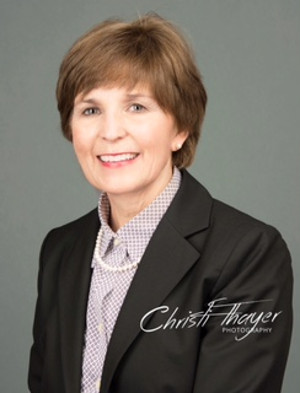Attorney Fees – The Bench perspective
 The Honorable Benjamin Bloom, Jackson County Circuit Court
The Honorable Benjamin Bloom, Jackson County Circuit Court
Assessing and resolving a party’s request for attorney fees is a unique experience for a trial court judge. Judges are asked to make decisions all the time. It is a central function our duties, one I embrace, and take seriously. Decisions on attorney’s fees are different from many matters because judges are asked to make a critical determination of a lawyer’s pecuniary interests and the value of his or her services.
Generally, petitions for fees arise in three different situations: general civil cases, domestic relations cases, and motions for sanctions. In civil cases, the court can only award attorney fees if a statute or contract authorize the award. The process for awarding attorney fees is set out in the Oregon Rules of Civil Procedure. Rule 68 C(4)(a) requires a party to submit a request for attorney fees no later than 14 days after entry of judgment. The court does have discretion to allow the filing of a petition after the 14-day period. A party opposing the fee petition can file an objection and the petitioner may thereafter file a response. ORCP 68 C(4)(c). If requested the court will hold a hearing. Otherwise, the court will determine the matter on the record. If objections are not timely filed, “the court may award attorney fees or costs and disbursements sought in the statement. ORCP 68 C(4)(f).
When I begin to address an attorney fee petition in a civil case, I start from a position of believing that a prevailing party is entitled to its reasonable attorney’s fees if a statute or contract authorizes those fees. I rely on factors set forth in ORS 20.075 when awarding fees if fees are authorized by statute and I consider those factors when fees are authorized by contract or in domestic relations matters.
In a civil case, with a couple of exceptions, I am apt to award all fees requested if the fees are for services related to the claim or claims on which a party prevailed, and which provide a basis for recovering fees if the amount sought is reasonable. I also award fees for work done on claims which would not provide an individual basis for fees if those claims included matters common to claims authorizing the recovery of attorney fees. See Vill. at North Pointe Condos. Ass’n v. Bloedel Constr. Co., 278 Or App 354, 369-370 (2016). I will award fees for preparing and filing an unsuccessful pretrial motion, such as a motion for summary judgment, if I determine that the filing of the motion was a reasonable litigation strategy. However, it is important that fee petitions include an explanation of the work done if a party wants to recover fees. The explanation does not have to be overly detailed but should give the court guidance of what work was actually performed. Claiming fees for drafting six memoranda is more easily justified when the court understands what drove the need for the work.
Turning to the exceptions, I will not award fees for work I feel has no reasonable connection to the merits of the prevailing claim. For instance, I denied a party fees in connection with a writ of mandamus seeking reversal of a judge’s decision not to recuse himself from a case. I also would not award fees for time spent generating a letter to the Bar complaining about opposing counsel’s conduct. I also do not award fees for work that appears to be duplicative. For instance, the court is used to seeing fees requested for legal research and drafting memoranda on the research. I generally will not award fees where more than one attorney in a firm is reviewing correspondence, reviewing emails, or reviewing a research memorandum when another attorney has generated fees for reviewing the documents or drafting the memorandum. I also am unlikely to award fees for services performed by a paralegal or legal assistant when an attorney has claimed fees for the same activity. For instance, I generally will not award fees for paralegal or legal assistant preparing a pleading or a letter when an attorney has claimed fees for the same activities. I believe the paralegal or legal assistant’s fees are part of firm overhead for which is accounted by the lawyer’s fees.
At a hearing on fees, it is expected that the party requesting fees will have a witness testify regarding the reasonableness of the fees. Similarly, the party opposing the fees should have a witness stating why the fees are unreasonable. Obviously, the witness on the fees will be an attorney familiar with hourly rates who can testify that the hourly rates and the work performed were reasonable.
Now I want to briefly talk about attorney fees in domestic relations cases and attorney fees as sanctions for discovery violations or other misconduct. In domestic relation cases, I will award a party who has “prevailed” attorney fees in certain limited circumstances. I consider a party to have prevailed if he or she obtained to greater part of the relief sought. The limited circumstances include: a significant disparity in the resources of the parties in the litigation, the conduct of the parties in the litigation, attempts to resolve the dispute, and the merits of the parties’ positions. In domestic relation cases, I generally do not award a party all of his or her attorney fees but rather a percentage of the fees because I believe each party is generally responsible for paying fees. The single biggest factors to me in awarding fees in domestic relations cases are the disparity in the parties’ incomes, and the reasonableness of the parties’ positions. In custody cases, I am extremely concerned if I believe a parent with resources is attempting to wage a war of attrition with the other parent in order to leverage concessions in custody or parenting time.
I only award fees for discovery violations or sanctions if I believe a party’s conduct has been overly egregious. I do believe that requesting fees as a sanction is generally, although not always, unwarranted and that requesting fees simply elevates the animosity between the parties and prolongs conflict. Frequently I defer ruling on a fees issue until after trial. When I do find that a party has blatantly failed to comply with reasonable discovery requests or failed to comply with a court order, I will certainly award fees.
Determining fee petitions is a necessary part of my job. Attorneys should not be shy about seeking fees if the award is authorized by statute or contract. In those situations, submit sufficient information for the court to make a good decision and be prepared to litigate the matter in a hearing. When the court has discretion to award fees (as in the domestic relations context or the sanctions context), the parties should weigh whether to request fees given the fact that fee petitions increase the polarization of opposing parties thereby making matters more difficult to resolve and increasing litigation expenses for everyone. Requesting fees when not authorized by statute or contract should be done cautiously in my experience.
Attorney Fees – The Plaintiff’s perspective
 J. Ashlee Albies, Albies and Stark, LLC, Portland
J. Ashlee Albies, Albies and Stark, LLC, Portland
One major reason fee shifting statutes exist is to allow people to seek vindication of their rights where they could not otherwise access the civil legal system. Many plaintiffs’ attorneys work on a contingency basis. These statutes and contingency fee arrangements allow us to take clients who do not have the financial means to pay hourly rates, or even what other lawyers might consider a reasonable flat fee. Our firm represents employees in employment disputes and plaintiffs in civil rights cases; many of our clients face economic uncertainty and/or do not have the means to pay an attorney to represent them in complex and high-risk litigation. As such, in order to do this important work, it is critical that plaintiffs’ attorneys successfully recover their fees. Here are some tips on how I approach this important aspect of plaintiff-side litigation.
As an initial matter, plead the statutory entitlement to fees in your complaint.1 At fee petition stage, follow ORCP 68, and apply the factors set out in ORS 20.075. Read these statutes, rules, and interpreting case law carefully and follow their guidance, and be sure to ask for specific findings in your motion.
If you are preparing a fee petition under ORCP 68, congratulations! The critical term for Plaintiffs’ counsel seeking fees under a statute allowing for an award of reasonable attorney fees is the word reasonable.
Key tips:
Track your time carefully, thoroughly, and daily. Use a time keeping program, or some consistent method to ensure your time is captured contemporaneously. Being able to represent you tracked your time contemporaneously makes it significantly more reliable, and you do not want to recreate your time going back through old emails and calendars. It is inefficient, time consuming, and unbillable. Given that most cases settle, and that most plaintiffs’ attorneys do not bill clients on a regular basis, accurate timekeeping may get deprioritized in the rush of a busy practice. Make it a habit to review your time keeping at the end of every day, or the close of each week. Also, be specific in your descriptions. Block-billing will draw objections, and the court may not award or may reduce block-billed time. Makarios-Oregon, LLC v. Ross Dress-For-Less Inc., 293 Or App 732, 739 (2018).
Review your time carefully. The appropriate calculation for attorney fee awards is the basic “lodestar” calculation: the number of hours reasonably expended on the litigation multiplied by the reasonable hourly rates for each timekeeper, with potential adjustments made for factors such as the risk of loss and the quality of the attorney’s work. Strawn v. Farmers Ins. Co. of Or., 353 Or 210, 217 (2013). When the time comes to prepare a fee petition, be thoughtful about what you trim and what you leave in and advise the Court regarding those decisions. For instance, I do not recommend billing 0.1 each for three separate brief emails. You can group them together for one 0.1 entry, which is more reasonable and increases your credibility. Remove time for administrative work performed by an attorney, or if you feel you really must claim time for making copies (don’t!), then bill that time at a lower rate. Do not, however, eliminate time that is compensable: Plaintiffs’s counsel are entitled to bill for multiple attorneys engaging in substantive strategy discussions. State ex rel. English v. Multnomah Cty., 231 Or App 286, 299 (2009). Likewise, time spent on an unsuccessful motion to compel or partial success in opposition to summary judgment may still be compensable. Goodsell v. Eagle-Air Estates Homeowners Ass’n, 280 Or App 593, 603, 604, (2016); Makarios-Oregon, 293 Or App at 739.
Present your time in an organized manner. In your fee petition, be as clear as possible. For example, use a chart that plainly describes attorney or staff time, rates, and total sought. Even after reading all the briefs, the court will want to know, clearly and directly, what you seek. Update this in your reply brief and have a final number at the hearing.
Use Experts to attest to your fee rates, as well as the reasonableness of your hours. Employment and civil rights litigation are complex areas of the law, factually complicated and legally challenging. Experts help justify your time and rate and may educate the court about the complexity of your litigation.
Your time is valuable and maximizing your recovery helps you represent more clients in need. Attorneys who successfully navigate an unfriendly legal framework to a positive jury verdict should be justly compensated for their work. For this reason, be sure to seek fees on fees: Courts may award fees for services provided in conjunction with the recovery of attorney fees. Emerald People’s Util. Dist. v Pacificorp, 104 Or App 504 (Or. 1990). Likewise, a contingent-fee arrangement can be the basis for an award of attorney fees that is greater than standard hourly rates, and the amount of fees does not have to be proportional to the damage award. Tanner v. Oregon Health Sciences Univ., 161 Or App 129, 132–134 (1999); Strawn v. Farmers Ins. Co., 228 Or App 454, 488 (2009).
Seek a multiplier if appropriate. Oregon law permits an enhancement of fees when it is supported by the facts and circumstances of the case. See Griffin v. Tri-County Metro. Transp. Dist., 112 Or App 575, 585 (1992) aff’d in part, rev’d in part, 318 Or 500 (1994).
Document efforts at settlement, even if, and especially if, fruitless.
What you want reflected in your fee petition, and thus you must live it during your case, is reasonableness. You can be aggressive, assertive, competent, and still be reasonable. My goal with a fee petition is similar to one of my goals as I litigate my cases: maintain credibility with the Court and the opposing party, while minimizing what opposing counsel can credibly attack. Value your time, your work, and your risk.
1 For a list of Attorney Fee provisions in Oregon, see Barbooks: Oregon Civil Litigation Manual, Ch. 28, Appendix 28A.
Attorney Fees – The Defendant’s Perspective
 Sarah J. Crooks, Perkins Coie LLP
Sarah J. Crooks, Perkins Coie LLP
When getting a new case, defense counsel should evaluate the potential for the plaintiff to seek recovery of their attorney fees, if successful. Defense counsel should also thoroughly evaluate the potential to recover attorney fees for their defense client, if successful in defeating plaintiff’s claim. In many cases, if not most cases, it is the claim for attorney fees that is the real risk for both sides of a lawsuit. Consequently, defense counsel must look for ways to minimize or defeat a plaintiff’s claim for attorney fees and/or seek to recover some or all of defendant’s attorney fees. Here are some tools to consider when addressing attorney fees from a defense perspective.
Bases for attorney fees. In most cases, a statute or contractual provision will provide the basis for a claim for attorney fees. In a contract dispute, defense counsel should read all relevant contracts carefully to understand whether there is a basis for either party to seek attorney fees. All attorney fee provisions based in contract, however, are mutual “without regard to whether the prevailing party is the party specified in the contract[.]” ORS 20.096.
Some key statutory bases. Many statutory claims, like claims under the Oregon Unlawful Trade Practices Act (“UTPA”), provide for the recovery of attorney fees for a successful plaintiff, and some provide for the recovery of attorney fees for a defendant who succeeds in defeating a statutory claim. Defense counsel should carefully examine the relevant statutory scheme to determine whether a successful defendant can seek to recover their attorney fees and the applicable standard for awarding attorney fees to a successful defendant, which may be a higher standard than for a plaintiff’s claim for attorney fees. See, e.g. ORS 646.638(3) (allowing court to award reasonable attorney fees to a prevailing defendant “only if the court finds that an objectively reasonable basis for bringing the action or asserting the ground for appeal did not exist”); but see ORS 646.638(4) (defendant cannot be awarded attorney fees if action is maintained as a class action).
Defense counsel should also carefully review ORS chapter 20, where several attorney fee statutes are codified, including statutes that provide bases for a defendant to seek attorney fees. One key statute to consider is ORS 20.105(1), which allows a defendant to seek an award of attorney fees when a plaintiff brings or maintains a claim without an objectively reasonable basis. In deciding whether to award attorney fees under this statute, courts look at the facts underlying a claim at the time the claim was made to determine whether there was no objectively reasonable basis for asserting the claim. Niman and Niman, 206 Or App 400, 420-21 (2006). But, importantly, the court’s review is not limited to the moment when a plaintiff files a complaint: “a claim that was objectively reasonable when asserted may become unreasonable when viewed in light of additional evidence or changes in the law.” Dimeo v. Gesik, 197 Or App 560, 562 (2005). “[A] party has a continuing duty to evaluate its position throughout the course of litigation.” Id. ORS 20.105(1) can be particularly useful and effective if a plaintiff will not drop a claim despite a change in the law or despite overwhelming contrary evidence, and defense counsel has developed a record supporting a court’s finding that the claim was not objectively reasonable, either when the complaint was filed or at some later point in the litigation.
ORCP 54 E Offers. Another tool available to a defendant is ORCP 54 E, which provides for an offer to allow judgment and can significantly minimize a plaintiff’s claim for attorney fees. If a plaintiff rejects an offer to allow judgment and later fails to obtain a judgment more favorable than the ORCP 54 E offer, a plaintiff may not recover costs, prevailing party fees, disbursements, or attorney fees incurred after the date of the offer, and a defendant may recover their costs and disbursements from the time of service of the offer. To maximize the effectiveness of ORCP 54 E, defense counsel should consider making an offer to allow judgment at different points throughout the litigation, if an earlier offer is not accepted. Any of the offers may exceed the ultimate judgment at trial and may be used to limit and minimize a plaintiff’s claim for attorney fees. This tool can be especially helpful when dealing with a plaintiff who overestimates the value of their claim or simply fails to re-evaluate the merits of their claim in light of facts developed in discovery. Defense counsel should carefully consider whether to include or exclude plaintiff’s attorney fees, if any claimed, in an ORCP 54 E offer.
Attacking the attorney fee petition. The briefing and hearing on a plaintiff’s petition for attorney fees provides one final opportunity for a defendant to limit or minimize a plaintiff’s claim for attorney fees. Attorney fees may be awarded to the “prevailing party,” defined as “the party who receives a favorable judgment or arbitration award on the claim.” ORS 20.077(2). When a case involves multiple claims or counterclaims, the court must designate the “prevailing party” for each claim, separately analyzing each claim. Id.; Beggs v. Hart, 221 Or App 528, 537-38 (2008). Likewise, when a single claim includes multiple counts that are factually and legally distinct, the court should analyze each count separately. See Rogers v. RGIS, LLP, 229 Or App 580, 585-86, adh’d to as mod on recons, 232 Or App 433 (2009) (analyzing counts separately). Finally, in situations where there are multiple issues to be litigated within a single claim and the results are mixed, the court will apply a qualitative test, weighing “what was sought by each party against the result obtained.” Beggs, 221 Or App at 537-38 (citation omitted). Charts can be helpful here.
In every case, courts have discretion to determine the reasonable amount of attorney fees to award under the specific circumstances. Hanna Ltd. P’ship v. Windmill Inns of Am., Inc., 223 Or App 151, 166 (2008). A defendant may be able to successfully challenge the hourly rates of plaintiff’s counsel using the Oregon State Bar Economic Survey and the Morones Survey of Commercial Litigation Fees. Although those surveys provide an “initial starting point,” an attorney’s hourly rate should also be considered in light of other factors, including the attorney’s experience, reputation, and ability. Oregon Realty Co. v. Greenwich Ins. Co., No 3:12-cv-00200-MO, 2013 WL 3287092, at *4 (D Or June 28, 2013), mod in part by Oregon Realty Co. v. Greenwich Insurance Co., No 3:12-cv-00200-MO, 2013 WL 4859305 (D Or Sept 11, 2013). Finally, defense counsel should be prepared to introduce expert testimony at the attorney fee hearing to discuss the time spent on various stages of the litigation, whether it was reasonable for the plaintiff to litigate in the way they did, and, most importantly, to discuss market rates for attorneys who handle matters like the one underlying the attorney fee petition at issue.
As a final cautionary note, if you object to the reasonableness of the amount of attorney fees sought by a plaintiff, the plaintiff may request and be permitted discovery on the amount of attorney fees defendant incurred in defending against the plaintiff’s claim. Plaintiff’s counsel may contend that defense counsel’s hourly rates and time spent will inform the court’s determination of the reasonableness of plaintiff’s requested attorney fees. So — consider carefully that the amount of defense costs may be disclosed before attacking the reasonableness of the amount of attorney fees requested by the plaintiff.
 The Honorable Danielle J. Hunsaker, Washington County Circuit Court
The Honorable Danielle J. Hunsaker, Washington County Circuit Court Jason Kafoury, Kafoury & McDougal
Jason Kafoury, Kafoury & McDougal Joel Mullin, Stoel Rives, LLP
Joel Mullin, Stoel Rives, LLP The Honorable Janet Stauffer, 7th Judicial Circuit – Gilliam, Hood River, Sherman, Wasco & Wheeler County Circuit Courts
The Honorable Janet Stauffer, 7th Judicial Circuit – Gilliam, Hood River, Sherman, Wasco & Wheeler County Circuit Courts The Honorable James Hargreaves (Senior Judge, retired), Lane County Circuit Court
The Honorable James Hargreaves (Senior Judge, retired), Lane County Circuit Court The Honorable Susan Tripp, Marion County Circuit Court
The Honorable Susan Tripp, Marion County Circuit Court